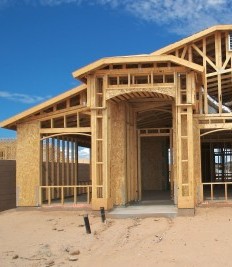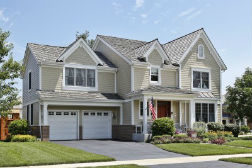NAHB: Home Builder Confidence Highest in 12 Years
 According to the National Association of Home Builders Housing Market Index for March, builder confidence in market conditions reached its highest level in 12 years and was six points higher than February’s index reading of 65.
According to the National Association of Home Builders Housing Market Index for March, builder confidence in market conditions reached its highest level in 12 years and was six points higher than February’s index reading of 65.
Housing market index readings are based on three components. Builder confidence in current market conditions for new single family homes rose seven points to 78; builder confidence in market conditions for the next six months increased five points to an index reading of 78. Most surprising was the reading for buyer traffic in new housing developments, which eight points to 54 in March. Buyer traffic readings typically don’t exceed the benchmark reading of 50, which indicates neutral builder sentiment. Builder confidence in buyer traffic for March surpassed 50 only twice since the housing bubble era.
Housing Market Index Readings Expected to Moderate in Coming Months
Robert Dietz, Chief Economist for NAHB, said that Housing Market Index readings will probably be more moderate in coming months as builders continue to face obstacles. Builders cited rising costs for materials and ongoing shortages of labor and lots. On the upside, builders surveyed said that a less regulatory environment contributed to higher confidence readings.
While home builder confidence is higher, the connection between confidence and building more homes isn’t matched by housing starts. Builders also said that rising mortgage rates are a barrier to buying new homes. The Federal Reserve’s Federal Open Market Committee raised the target federal funds rate to 0.75 to 1.00 percent on Wednesday; federal rate hikes typically influence private lenders to raise consumer rates including mortgage rates.
In a post-meeting statement, Fed officials said that the federal funds rate remains accommodative and will continue to sustain economic growth and the Fed’s goal for a long-run inflation rate of 2.00 percent. The Fed cited its dual mandate of achieving maximum employment and price stabilization as supporting its decision to raise rates, but stated that actual decisions to raise the federal funds rate are based on close readings and information about global and domestic economic developments; future decisions could be impacted by emerging economic factors.

 Builder confidence in markets for new homes fell three points in February to a reading of 58. January’s reading was revised upward to 61. Builders have repeatedly expressed concerns shortages of labor and lots for development, but continue to express confidence in future sales conditions.
Builder confidence in markets for new homes fell three points in February to a reading of 58. January’s reading was revised upward to 61. Builders have repeatedly expressed concerns shortages of labor and lots for development, but continue to express confidence in future sales conditions. Last week’s scheduled economic reports included the NAHB Housing Market Index, Housing Starts, FOMC statement and Fed Chair Janet Yellen’s press conference. In addition to weekly reports on jobless claims and mortgage rates, inflation reports were also released.
Last week’s scheduled economic reports included the NAHB Housing Market Index, Housing Starts, FOMC statement and Fed Chair Janet Yellen’s press conference. In addition to weekly reports on jobless claims and mortgage rates, inflation reports were also released.